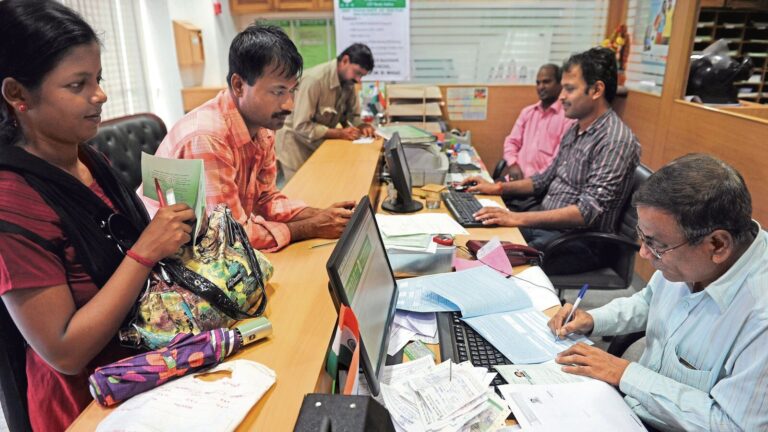Thirteen years ago, in FY11, public sector banks employed 755,102 people, while at the end of FY24, the number stood at 756,015, the RBI data showed.
These banks have lost about 12% of their employee base in the last seven years. Between FY17 and FY24, public sector banks lost more than 100,000 employees even as staff across the country’s banking sector increased by nearly half a million, the data showed. Interestingly, private sector banks have doubled their staff count to 845,841 in the same period.
The number of employees in public sector banks was at its peak in FY17, when they had a total of 857,500 staff. These include three categories of employees: officers, clerks and sub-staff. Clerks are present in bank branches where they act as tellers, cashiers and are also responsible for filing documents. They are also employed at administrative offices of banks, assisting officers. The primary difference between a clerk and an officer is the latter’s ability to sanction loans.
Mint reported in September 2022 that the share of clerical jobs in India’s banking system has declined over the past years, from the highs of over 50% in the early ’90s to 22% as of FY21, showed the latest segregated bank employment data released by the Reserve Bank of India last week. This has further declined to 17.8%.
Experts said that jobs available in the PSU and private sector are becoming similar with higher cash payout in the private sector, attracting more employment seekers.
“In the mid-senior level, PSUs offer housing facilities which work in their favour. More jobs and new-age opportunities are available across the finance sector and therefore more avenues to the new generation workforce,” said Upasana Agarwal, partner (professional and financial services), ABC Consultants, a recruitment services company.
Agarwal said that there is demand for experienced risk and regulatory jobs and the talent at public sector banks is mobile. Private sector firms, she said, are willing to recruit from metros and non-metros from this available talent pool. “Private sector offers more cash-in-hand and PSUs give more benefits which may not be very attractive to the younger workforce but if you have worked in PSUs for over two decades, then you are much in demand.”
According to a senior public sector bank executive, the annual recruitments by state-owned banks have come down following the mergers of several such lenders. In April 2019, Dena Bank and Vijaya Bank merged into Dena Bank. This was followed by 10 state-owned banks merging into four the next year.
“Most PSU banks are just hiring to replace attrition, instead hiring in large numbers like earlier,” the banker said. “The pace of addition of branches has also slowed down in the last few years following the mergers. If there are…
Read More: Headcount at state-owned banks slumps to lowest in 13 years, shows RBI data



